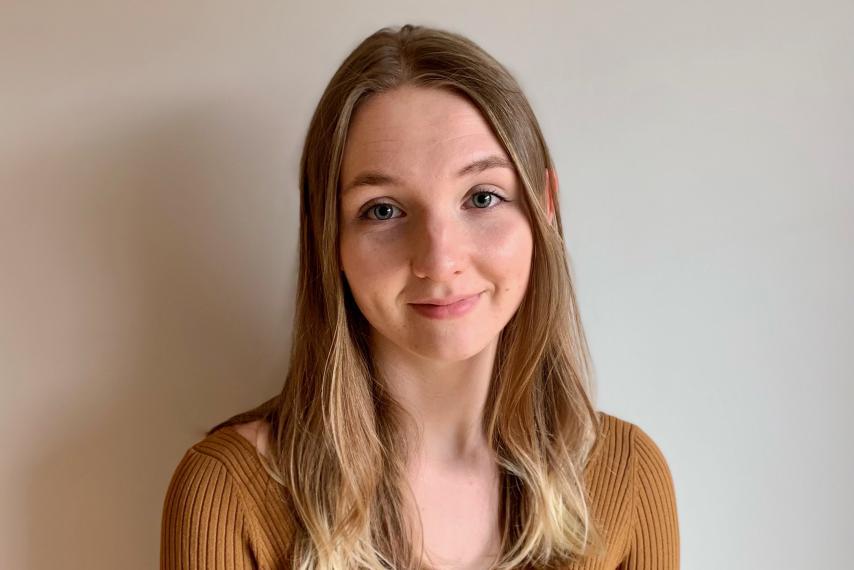Student Feature: Q&A with Emily Wedde

Emily Wedde is the president of the U of G Nanoscience Club and in her fourth year of a Bachelor of Science degree, majoring in Nanoscience, set to graduate this year. When she’s not studying or running one of U of G’s many student clubs, Emily also likes to garden, swim and do puzzles.
Did you have a role model that influenced your decision to work in science? What made you want to study Nanoscience?
My role models have always been my teachers. I have been very fortunate that since elementary school I have always had really supportive teachers that encouraged me to explore science. While I have been studying at U of G, I have met a lot of outstanding professors who have become my role models such as, Dmitriy Soldatov, John Dutcher, Daniel Thomas, and Marcel Schlaf. I am aiming to work as a professor in the future to be able to teach and do research simultaneously.
The first time I discovered Nanoscience, I was scrolling through a huge list of programs for undergraduate degrees at different schools. I came across Nanoscience on the University of Guelph site, and I had no idea what it was. When I looked it up, I came across the transcript of Richard Feynman’s talk There’s Plenty of Room at the Bottom, from the 1950s, which discusses how much potential there is when we look down to the nanoscale. Reading that made me certain that this is the field I wanted to pursue.
What made you choose the University of Guelph?
Originally, I started looking at the University of Guelph because my older sister is a Guelph alumni and really enjoyed the U of G environment. It also is one of the very few schools in Canada that offers a Nanoscience undergraduate program. The program at Guelph is really unique in that you are able to tailor your studies to your personal interests within the Nanoscience curriculum. Personally, I followed the chemistry-focused nanoscience pathway but there is also the opportunity to pursue physics, computer science, biotechnology or something else of your own choosing. The ability to tailor my education as I went through the program was what made me ultimately choose Guelph.
How has your experience been as a member of the Nanoscience club? What led to the big step to president?
I initially joined the club in my first year as a way to make friends. It was a great environment to interact with people from the Nanoscience program and other STEM majors who had similar interests.
The students from years above have been very supportive since day one: making sure that all of the first-year students knew the best ways to succeed in the program in terms of academics and tips on having the best university experience. The support from students in upper years was incredibly helpful for me to navigate my undergraduate degree.
I wanted to join the executive team of the club so I would be able to offer the same support to those who joined after me. Initially, I joined the executive team as the VP Social where I was able to spend a lot of time engaging with students in club to see what concerns they had and what support they felt they needed. My goal after making the step to president was to start engaging the club in outreach again and to try to bring the members together as best as possible within COVID-19 restrictions.
What has been your experience in Nanoscience so far? Is there anything that has stood out to you about the program specifically? Have you had the opportunity to participate in any research experiences?
One of the amazing things about the program is that we are given hands on experience working with specialized equipment like scanning electron microscopes and atomic force microscopes that are incredibly powerful tools for scientific research, and not standard tools in an undergraduate lab. There are a lot of hours that go into developing the practical laboratory skills that make this program very unique.
Over the course of my undergraduate degree, I have had the opportunity to engage in an undergraduate research assistantship. In this role I worked alongside a Ph.D. student and supervising professor who mentored me in the scientific research process. I enjoyed this experience so much that I returned to the same research group to do my fourth-year undergraduate research project, which I am just finishing up this semester.
How do you handle running a club and a full course load?
It has definitely been difficult at times, but really it comes down to having a great executive team helping me keep the club running smoothly. There is also a lot of support from professors and graduate students who were previously members of the club that have helped, especially with the transition back to in-person activities.
What were the biggest obstacles you had to overcome?
I think the biggest challenge for me, and so many other undergraduate students at this time, has been dealing with COVID-19. As a student, learning online and pursing a major where a lot of the best learning is done hands-on in the lab has been very difficult. As the president of a club, it has been difficult to foster the same supportive and interactive environment as the majority of club activities have had to be done online. The slow progression back to in-person events has been really great, and hopefully will continue so the next set of Nanoscience club executives are able to bring back some of the pre-COVID events.